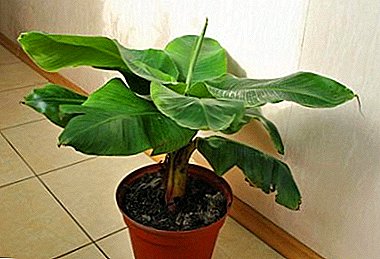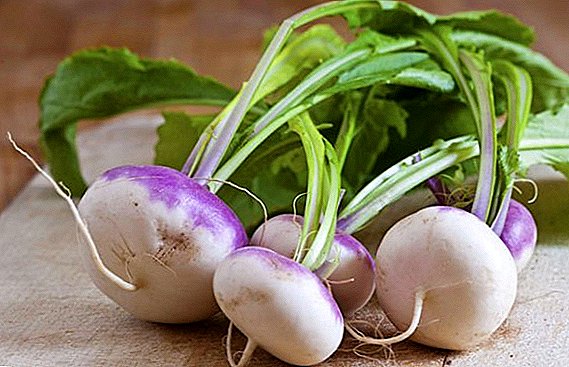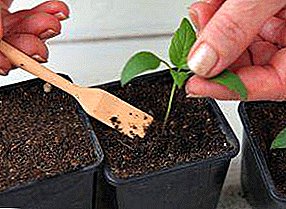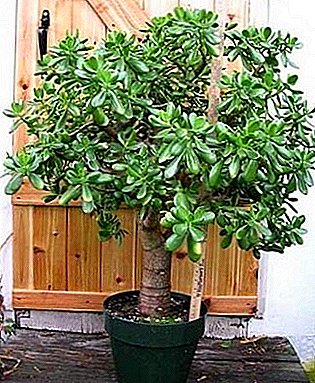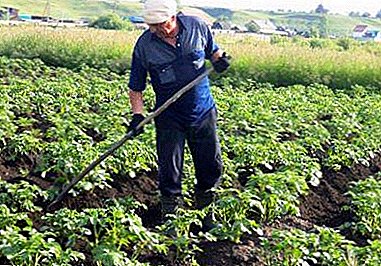
The agrotechnology of potatoes includes several major activities, and hilling among them occupies a special place. Not only experienced summer residents have heard about it, but also those who are completely far from garden affairs.
This is quite a laborious task and there are even opponents of this potato processing method. They believe that it is enough only to loosen the aisles with planted vegetables.
We’ll tell you more about why the hilling of potatoes is done. Why is it considered that this procedure contributes to higher yields. It is necessary to spud it all the same or not to increase the harvest.
Advantages and disadvantages
Potatoes are grown for its underground tubers, so the agricultural technology of this vegetable has its own characteristics. For the formation of stolons with tubers require certain conditions: optimal temperature indicators and the presence of the required amount of moisture. The quantity and quality of the future harvest depends on their observance, and that is why hilling is a necessary and important undertaking.
Thanks to this procedure, the following occurs:
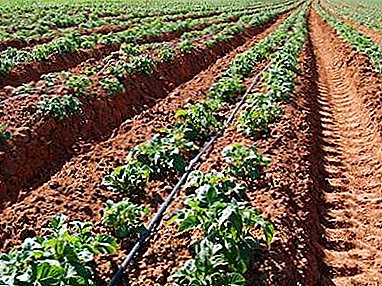 The soil layer increases over the root system of potatoes, which ensures a stable temperature and moisture necessary for the proper growth and development of tubers.
The soil layer increases over the root system of potatoes, which ensures a stable temperature and moisture necessary for the proper growth and development of tubers.- Loosening the soil makes it more breathable, eliminates the upper crust.
- Dumping the tubers with soil, which are visible from the soil, helps prevent their greening and prevents them from collecting solanine.
- The process of hilling beds helps get rid of weeds that prevent potatoes from growing and developing.
Hilling has its opponents, claiming that this procedure can be carried out only in the northern regions of the country, where the soil is very wet. In their opinion, on the steppes and forest-steppe lands, hilling is not only ineffective, but sometimes harmful.
- For example, in the south of Russia, in a dry summer, potatoes do not spud at all, since this can lead to drying out of the soil and an increase in its temperature, which can have a detrimental effect on potato tubers.
- Also hilling is not subject to potato beds grown under black agrofibre. This non-woven material creates a comfortable environment for the development of potatoes, contributes to better tying, growth and maturation of tubers.
Why do hilling potatoes?
Hilling potatoes is aimed at obtaining a large number of additional shoots, which are formed tubers. Regular treatment makes the bushes thicker and more powerful.
A large number of tubers are formed on the set of stolons, and a thick leaf mass supplies the lower parts of the plant with sufficient nutrients, which helps to increase yield.
Why does the harvest increase significantly?
Potato roots sprout only 15 cm deep, so hilling is carried out only when the stems reach a length of 30 cm. The procedure is aimed at increasing the yield due to the growth of roots and the formation of additional horizontal shoots, which are formed tubers.
Important! The wider and higher the crest, the more formed stolons with tubers.
How much does this procedure contribute to?
If hilling is done in time, when the height of young plants is from 3-5 cm to 15-18 cm, then the root system of the potato will begin to actively form in the formed ridge, an increasing number of tubers will be formed on the growing stolons. And the higher is the height of the ridge, that is, the greater the proportion of the stem in the soil, the stronger the stolons will be formed, and, consequently, the plant will form a greater number of tubers in the nest.
Hilling allows not only to increase the yield by 20-30%, but also helps to improve the structure of tubers.
So is it worth doing?
Do I have to do it or not? Exists several reasons for hilling potatoes:
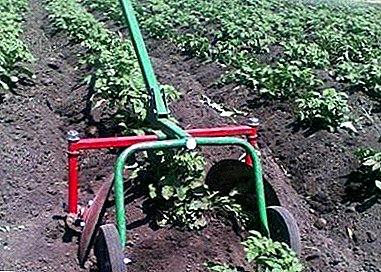 Hilling protects potato shoots from late frosts. This event is very important in climatic zones, where unstable weather conditions. Hills from the earth around young stalks serve as their warm shelter. Vulnerable shoots are protected from sudden frosts, and can easily grow and develop even in harsh weather conditions.
Hilling protects potato shoots from late frosts. This event is very important in climatic zones, where unstable weather conditions. Hills from the earth around young stalks serve as their warm shelter. Vulnerable shoots are protected from sudden frosts, and can easily grow and develop even in harsh weather conditions.- High earthen mounds surrounding the potato, protect the immature stems of plants from strong winds, do not allow him to break and bend them.
- Hilling improves the soil structure, making it more loose and breathable. It is very useful and necessary when growing potatoes on dense and moist soil.
- Potatoes need enough moisture. Hilling allows water to penetrate faster to the underground parts of the plant.
- This procedure actively fights weeds that prevent the proper growth and feeding of potato bushes.
- Shallow planting and regular hilling of potatoes makes the harvesting process easier because the tubers are grown almost on the surface of the ground.
- Heaped beds are easier to treat with insect repellents such as the Colorado potato beetle.
- Heaped potato plantations are easier to handle with various agricultural cultivators.
Conclusion
In the article we looked at all the pros and cons of hilling potatoes. As we see, this procedure can be very useful for this agriculture, it stimulates its growth and increases its yield. And you now know why when hilling the crop of potatoes increases significantly. But not for all regions and growing conditions to carry out the procedure appropriate.


 The soil layer increases over the root system of potatoes, which ensures a stable temperature and moisture necessary for the proper growth and development of tubers.
The soil layer increases over the root system of potatoes, which ensures a stable temperature and moisture necessary for the proper growth and development of tubers. Hilling protects potato shoots from late frosts. This event is very important in climatic zones, where unstable weather conditions. Hills from the earth around young stalks serve as their warm shelter. Vulnerable shoots are protected from sudden frosts, and can easily grow and develop even in harsh weather conditions.
Hilling protects potato shoots from late frosts. This event is very important in climatic zones, where unstable weather conditions. Hills from the earth around young stalks serve as their warm shelter. Vulnerable shoots are protected from sudden frosts, and can easily grow and develop even in harsh weather conditions.